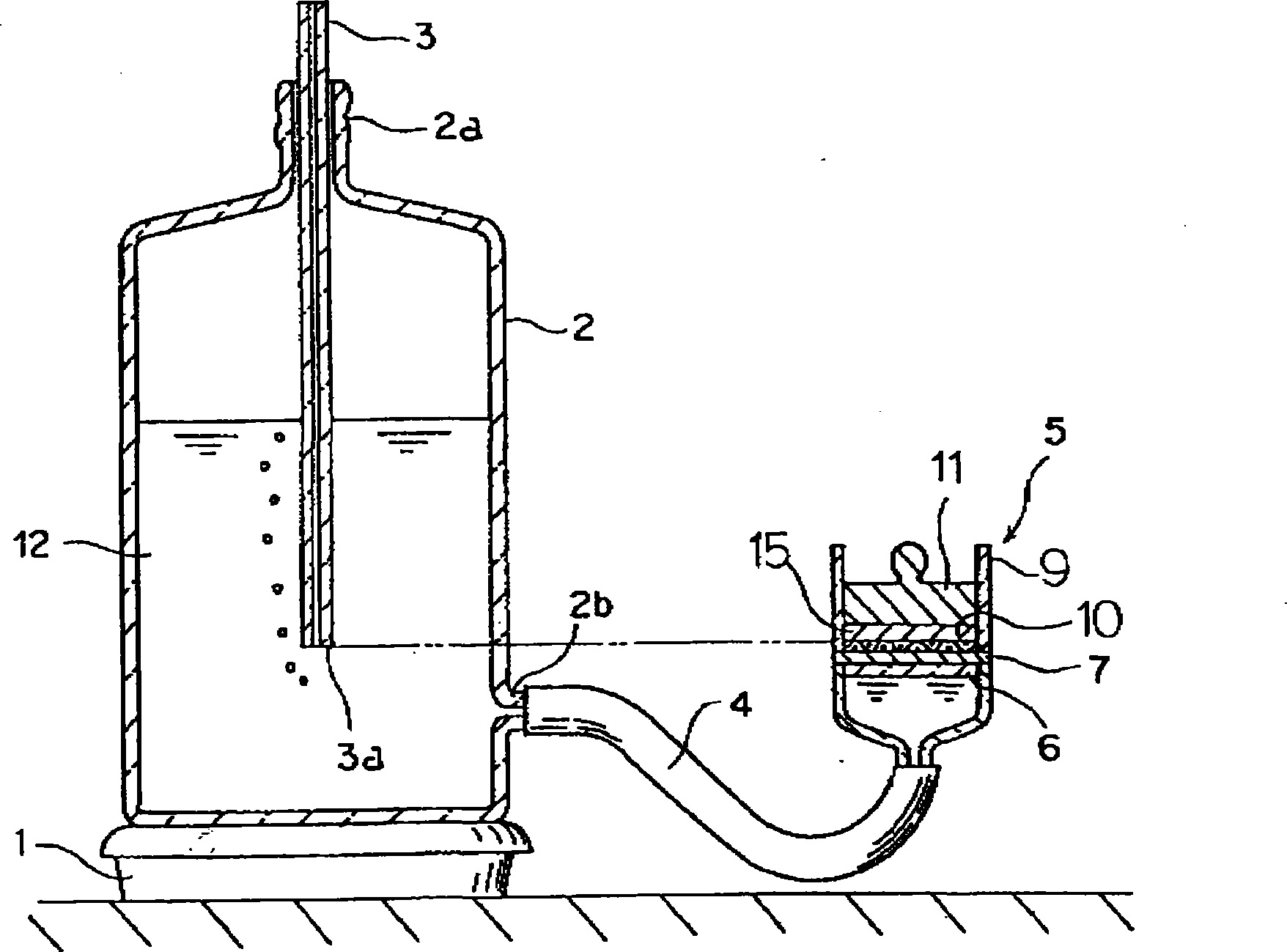Water-absorbing agent and body liquid absorbing production
A technology of water-absorbing agent and water-absorbing resin, which is applied in various fields and can solve the problem that the water-absorbing performance of the resin cannot be fully displayed.
- Summary
- Abstract
- Description
- Claims
- Application Information
AI Technical Summary
Problems solved by technology
Method used
Image
Examples
Embodiment 1
[0389] The reaction was prepared by dissolving 9.25 g of polyethylene glycol diacrylate (the average number of moles of added ethylene oxide was 8) in 5,500 g of an aqueous sodium acrylate solution (monomer concentration: 30 wt %) with a neutralization rate of 65 mol % solution. The solution was then degassed for 30 minutes under a nitrogen atmosphere before being introduced into a reactor, a covered stainless steel double-armed kneader with a volume of 10 liters and two sigma-shaped blades and a jacket. The reaction solution was kept at 30°C, and the air inside the system was replaced with nitrogen. Then, under the condition of stirring the reaction solution, 1.91 g of 2,2,-azobis(2-amidinopropane) dihydrochloride, 0.96 g of sodium persulfate and 0.10 g of L-ascorbic acid were added for about 1 minute. Then start the polymerization reaction. The polymerization reaction was carried out at a temperature of 30-80°C, and the obtained hydrogel polymer was taken out 60 minutes a...
Embodiment 2
[0393] A reaction solution was prepared by putting 720 g of acrylic acid, 3.08 g of N,N,-methylenebisacrylamide as an internal crosslinking agent, and 2,718 g of deionized water as a solvent into a reactor, and the reactor Is a covered stainless steel double-arm kneader with a volume of 10 liters, with two sigma-shaped blades and a jacket. The reaction solution was then maintained at 15°C, and the air inside the system was replaced with nitrogen. Then, while stirring the reaction solution, 21.6 g of 10 wt % 2,2,-azobis(2-amidinopropane) dihydrochloride aqueous solution, 18.0 g of 1 wt % L-ascorbic acid aqueous solution and 20.6 g of 3.5 -% aqueous hydrogen peroxide to initiate polymerization. Stirring was stopped at the same time the polymerization was initiated. The polymerization reaction was then allowed to proceed while, as the temperature of the reaction solution rose, the temperature of the jacket was appropriately raised so that the temperature of the reaction solutio...
Embodiment 3
[0401] By mixing 67.0 parts (weight) of 37 wt% sodium acrylate aqueous solution, 10.2 parts (weight) of acrylic acid, 0.097 parts (weight) of polyethylene glycol diacrylate (the average molar number of added ethylene oxide is 8) and 22.0 parts ( weight) water to obtain an aqueous monomer solution. Nitrogen gas was blown into the aqueous monomer solution in the reactor so that the concentration of dissolved oxygen in the solution was reduced to 0.1 ppm or less. Then, the temperature of the solution was adjusted to 18°C under a nitrogen atmosphere. Then add dropwise 0.16 parts (weight) 5wt% sodium persulfate aqueous solution, 0.16 parts (weight) 5wt% 2,2,- azobis (2-amidino propane) hydrochloride aqueous solution, 0.15 parts (weight) 0.5 wt% ascorbic acid aqueous solution and 0.17 parts by weight of 0.35 wt% hydrogen peroxide aqueous solution.
[0402] After the hydrogen peroxide was added dropwise, the polymerization reaction started immediately, and after another 10 minute...
PUM
| Property | Measurement | Unit |
|---|---|---|
| diameter | aaaaa | aaaaa |
| adsorption capacity | aaaaa | aaaaa |
| adsorption capacity | aaaaa | aaaaa |
Abstract
Description
Claims
Application Information
 Login to View More
Login to View More - R&D
- Intellectual Property
- Life Sciences
- Materials
- Tech Scout
- Unparalleled Data Quality
- Higher Quality Content
- 60% Fewer Hallucinations
Browse by: Latest US Patents, China's latest patents, Technical Efficacy Thesaurus, Application Domain, Technology Topic, Popular Technical Reports.
© 2025 PatSnap. All rights reserved.Legal|Privacy policy|Modern Slavery Act Transparency Statement|Sitemap|About US| Contact US: help@patsnap.com



